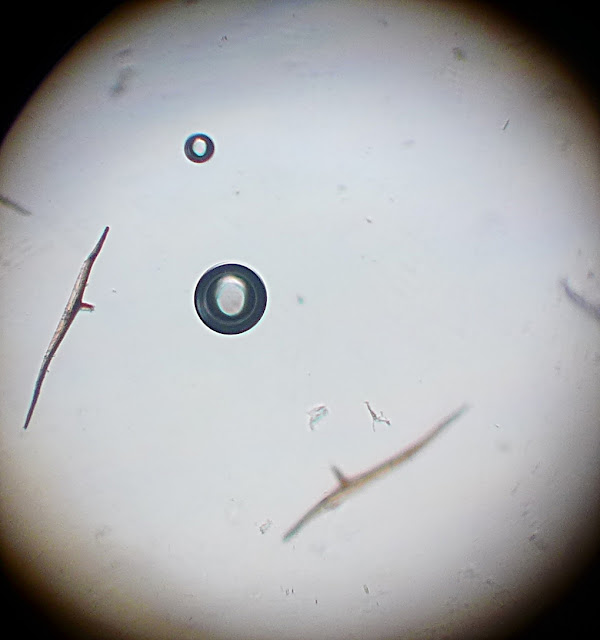- size (relative)
- shape
- structure (including color)
- organization
Types of Tissues
Based on A) POSITION, B) COMPOSITION
Made up of 3 cell types:
- parenchyma - uniform primary cell wall METABOLISM
- collenchyma - unevenly thick (patterns of cell - cell wall - cell - cell wall) PLASTIC GROWTH
- sclerenchyma - secondary cell wall (red, has thicker outlines) MECHANICAL SUPPORT, FLEXIBILITY
A. POSITION
Meristems - founder cells in the mature plant (this is where they come from)
- apical - found at tips (shoot/root apical meristem)
- lateral - circumferential growth (ex. flat cells)
dermal, ground, vascular tissue systems
Epidermis:
- uniseriate - single layer of cells
- multiseriate - multiple layer of cells (e.g. Ficus elastica)
Composed of: guard cells, accessory cells, pavement cells (surrounding accessory cells). Specimen examined: Tradescantia, abaxial side.

Trichomes - epidermal outgrowths
B. COMPOSITION
a) SIMPLE (1 cell type)
1) Parenchyma
i) chlorenchyma - chloroplast
ii) aerenchyma - airspaces
iii) storage parenchyma - contain plastids, food
3) sclerenchyma
i) sclereids - short and round, compact
ii) fibers - cells elongated and tapering
b) COMPLEX (more than 1 cell type)
1) xylem
i) water conducting elements
- tracheids - thin, long, tapering ends
- vessels - wide diamater, open ends
2) phloem
i) sieve tubes - sugar; companion cells - metabolism & maintenance
parenchyma cells, no nuclei
------
Shoot apical meristem of Coleus
Pyrus - (pear) pulp, squash mt w/ alcohol phloroglucinol
sclereid - stained violet
parenchyma - bubble like structures
Gossypium - (cotton) wet mount
------
TRICHOMES - epidermal outgrowths (all under LPO)
- Stellate (Urena lobata)
- Scale (Eleagnus philippinensis)
- Branching (Vervascum thapscus) LPO
- Bristle (mucuna pruriens)
- Glandular (munligia calabure)
- T-shaped (Chrysophyllum)
- Simple hairs (Theobroma cacao)
- Stinging (Laportea meyeniana)
------
TRACHEARY ELEMENTS - vessels in macerated stems of different plants
Patterns of secondary wall thickening:
*Tracheids:
annular - fine ring along walls of xylem
helical - spiral
annular - fine ring along walls of xylem
helical - spiral
pitted - walls have deposits, pits (empty spaces on walls)
*Tracheids/Vessels:
scalariform - look like ladders
reticulate/netted - "gulo gulo"
- Pinus HPO - pitted, tracheid
- Tilia HPO - scalariform, vessel
- Helianthus HPO - reticulate, vessel
- Cucurbita HPO - helical (can't tell if vessel or tracheid)
- Zea HPO - annular
----
Assignments:




















